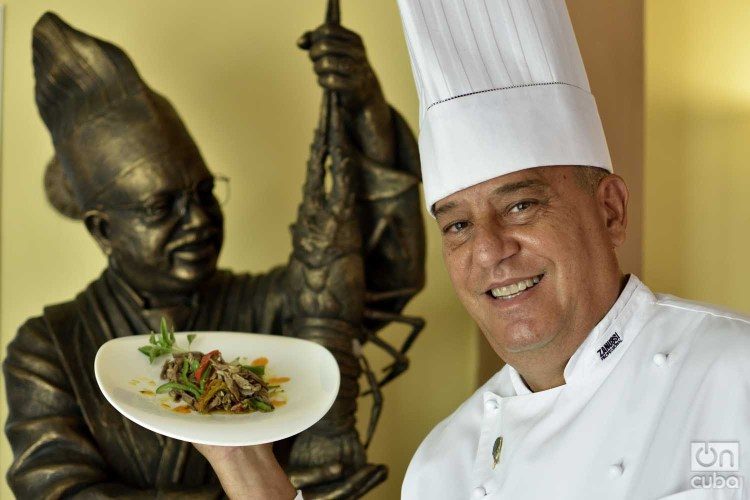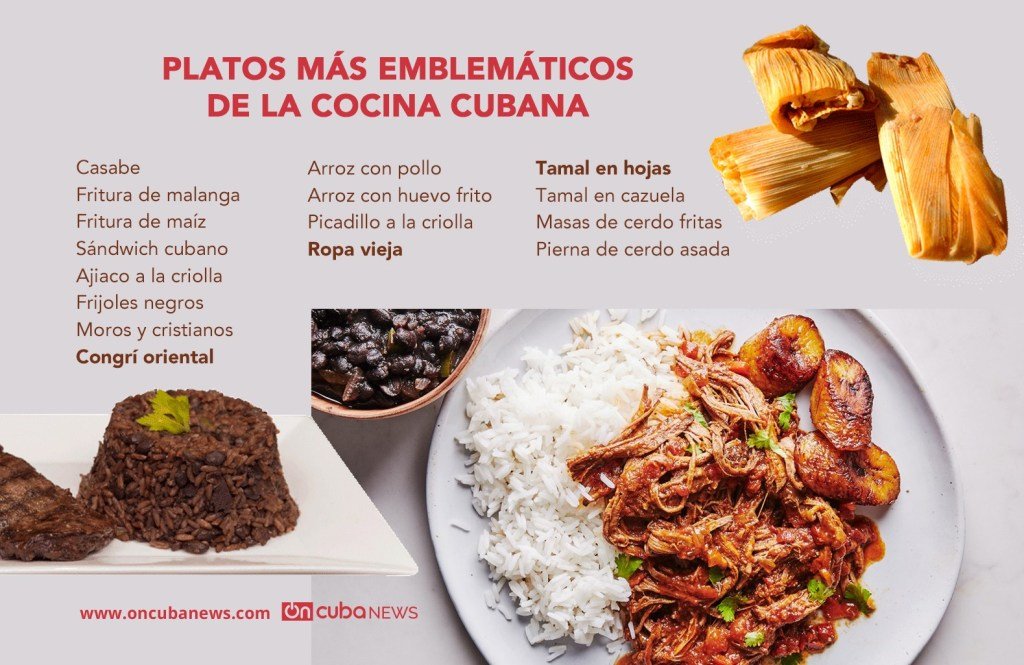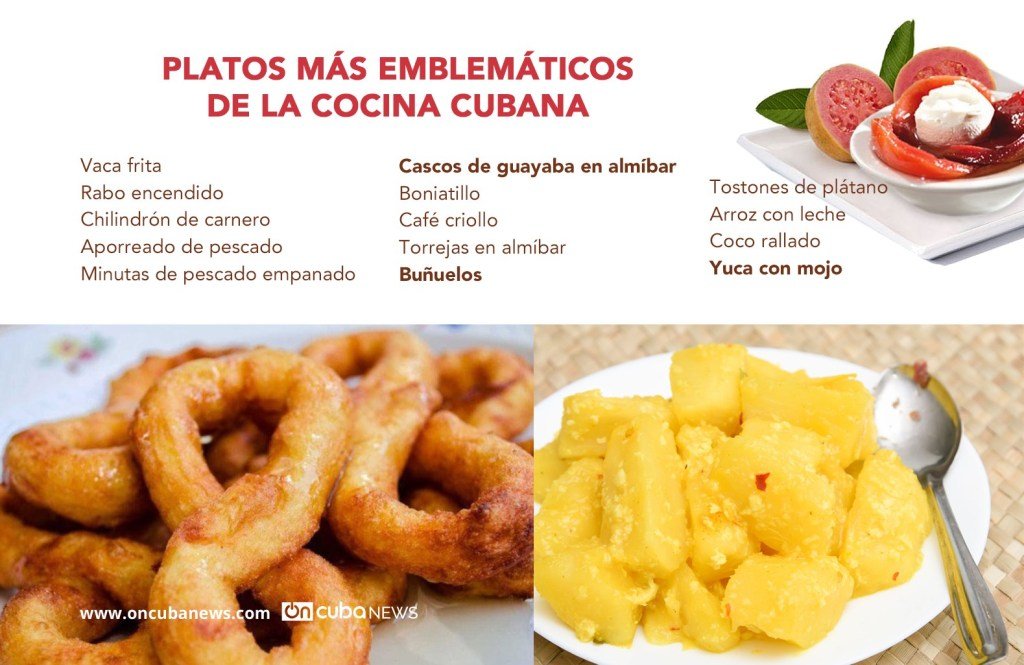The mother of Eddy Fernandez, as well as of his three brothers, would not let him into the kitchen “because of the machismo of that time.” However, more than four decades later he is one of the most recognized chefs in Cuba, president of the island’s Federation of Culinary Associations and a tireless defender of Cuban cuisine, who aspires that it be recognized as a national heritage.
He’s been working for several years to achieve this from the institution he presides over. He has already delivered a report, the result of a thorough investigation and “with more than 40 national and international references,” to the offices of the National Council of Cultural Heritage and is awaiting its opinion. It’s currently studying the proposal following the established standards for these cases.
For Eddy, that this aspiration becomes a reality would be, above all, an act of justice, a victory that, beyond the Culinary Federation, all Cubans deserve.
“I think all of Cuba deserves that our cuisine be recognized as a heritage,” says to OnCuba the 58-year-old chef, 16 of them at the head of the Federation. “We are not seeking to exalt it for our benefit, because ultimately any organization or person could have prepared the report, but for the benefit of Cuban cuisine itself, of the existing tradition and of all those of us who practice and enjoy it, which is all Cubans.”
His reasons for his yearning for the recognition are also firm. In the first place, he argues, “because Cuban cuisine is the result of a transculturation, of an inheritance derived from the Spaniards, the indigenous people, the Africans, but also from the Chinese, the French, the Mexicans and other peoples that to a greater or lesser extent have contributed to the composition of our culinary tradition. It’s a mixture in which you cannot define exactly the percentages of one part or another, as it happens with the Cuban.”
“Another important element is the family component, which also takes from tradition,” he adds. “The core of Cuban cuisine is in the families. In each home, in each family, there is a particular version of that cuisine, with its recipes and variants, which together with the other versions supports the whole. That is why what we are defending is not a recipe or a unique dish, be it cassava, roast pork, boniatillo or black beans, or a unique way of cooking, but the knowledge, traditions, that shape our culinary identity.”
However, Fernández notes that the Federation has identified 30 “emblematic dishes” that are “among the favorites of those born in Cuba” and that, far from contradicting, complement the report presented at the National Heritage Council.
*Caption
CUBAN CUISINE’S MOST EMBLEMATIC DISHES
Cassava
Taro fritters
Corn fritters
Cuban sandwich
Cuban ajiaco (stew)
Black beans
Rice cooked with black beans
Eastern congrí
Rice with chicken
Rice with fried egg
Cuban-style minced meat
Ropa vieja
Tamales
Corn stew
Fried diced pork
Roast leg of pork
_____________________________
“It’s the result of an investigation of many years, which gave rise to a book,” he explains, “and that includes the same simple dishes as well as others more complex for their elaboration, but they are all representative of the cuisine of this country, the same ropa vieja and eastern congrí as the tamale and the white rice with fried egg and fried ripe plantain. They are recipes, let’s say, that are standardized, that seek to unify existing variants and serve as a guide for the youngsters, those who don’t know or completely dominate our cuisine. Based on them one can then create and recreate, but they are the foundation.”
Only 30?
For now, they are 30 dishes, which doesn’t mean that later there won’t be more, and among them the “flagship” dish, which we intentionally identify, is the ajiaco stew, which is very Cuban and represents precisely the mixture and transculturation of which those born in Cuba are the result of, as Fernando Ortiz pointed out. But note, it’s not an already cooked ajiaco, but one that is still boiling, which is constantly changing and developing, as is the culinary art itself.
In addition, we are working on an extension of this study to identify 10 emblematic dishes by region, which will undoubtedly allow a broader view of Cuban cuisine.
*Caption
CUBAN CUISINE’S EMBLEMATIC DISHES
Vaca frita
Spicy cow tail
Ram in tomato and pepper sauce
Fish in tomato and pepper sauce
Breaded fish filets
Guava shells in syrup
Boniatillo
French toast in syrup
Cassava fritters in syrup
Fried green plantain (tostones)
Rice pudding
Grated coconut
Boiled cassava in garlic and oil-based sauce
_____________________________________________
Why insist on Cuban cuisine at a time when your profession, like so many others, has been globalized?
Promoting Cuban cuisine is one of the primary objectives of the Culinary Federation that I head. First, as respect for our culture and the tradition we already spoke about, but also as a practical matter, related to the products that are within our reach, those that agriculture, livestock and fisheries can produce in Cuba. That is its historical base. We cannot propose a cuisine that rests on imports; nobody makes national cuisine with products that come from abroad.
We are advocating that Cuban cuisine be practiced in the largest number of tourism and gastronomy facilities, that it be the hallmark that distinguishes them. After all, people who come to Cuba don’t come looking for Italian, Arabic or Chinese food, but rather ours, just as they don’t come to listen and dance to music from other countries but to Cuban music. That is why our cuisine has to be well-identified and promoted, without that meaning that we neglect the way we prepare international cuisine. But we have to defend Cuban cuisine, show it to those who visit us and be proud of what it represents.
It’s not a simple task, because it doesn’t depend only on us, but also on those who are responsible for producing the food and products that we use for cooking. It’s also necessary to open more schools because they are insufficient today. The current development of tourism and gastronomy in Cuba, not only in the state sector but also in the private sector, demands a greater number of chefs than those currently being formed. But at least we as an organization have made a great deal of effort to promote Cuban cuisine. And as a result of that work, we have reached the conclusion that it must be recognized as a heritage.
How can our traditional cuisine be combined with the most contemporary influences of culinary art?
Right now cuisine is undergoing changes in its presentation, the way it’s prepared, the amounts of certain ingredients, because cuisine evolves. Following these guidelines, we chefs, the professional cooks, have also tried to bring ours closer to some international standards, for example, in terms of salt, animal fat, sugar content―our people have been high consumers of all that and today those high levels are not considered healthy; so what we are looking for is to correct this and improve the quality of life of consumers.
We are also concerned about using more fruits and vegetables in our meals, and to give a better presentation to the dishes, to make them more aesthetic and pleasant to the eye. I think that Cuban cuisine can be stylized to temper it to new trends in the world, without giving up tradition or neglecting original recipes.
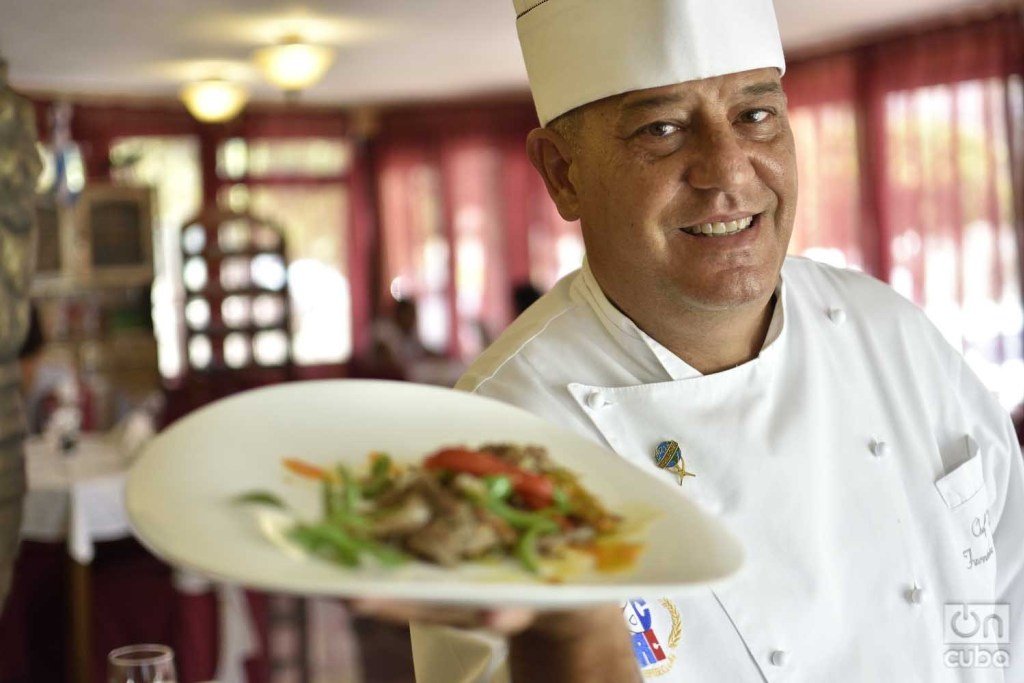
So, contrary to what some people think, Cuban cuisine can be healthy….
Of course. Although there are those who think otherwise, Cuban cuisine can be healthy. No food is bad for your health, the ones that are bad are the people who don’t know how to prepare or consume it.
Pork, for example, which is one of the emblematic products of our cuisine, isn’t harmful just because it’s pork. It depends on how it’s made, how often it’s consumed, how much it’s consumed. The important thing is to educate people, create a more appropriate food culture for their lives, to the detriment of customs and consumption habits that don’t favor it―and are the cause of the growing presence in Cuba of obesity, hypertension, diabetes―, although these habits are deeply rooted. I recognize that it’s a complex issue, but for that reason it’s necessary to insist on it, especially with the youngsters, who are the ones who must, because of a logical question, develop Cuban food in the future.
There are also those who say that due to the deficiencies that Cuba has suffered in recent decades, Cuban cuisine has lost part of its essence, that it’s easier to find it in Miami than on the island….
I don’t believe that the fact that we have limitations should give rise to say that Cuban cuisine has lost its essence or that today it only exists in Miami. It’s true that in Miami there are products that in Cuba are more difficult to find, but that is no guarantee that the dishes there will always be prepared in the best way, or that here in Cuba they cannot be made with rigor and creativity.
Despite the shortages and difficulties that the country has gone through, fortunately the gastronomic memory has not been lost. Some innovations may have been made out of necessity, some ingredient has been changed, but habits and traditions have not been lost. I believe that the rise of the self-employed sector in gastronomy has served to rescue many typical dishes, desserts, recipes that identified Cuban places and regions, and state centers and institutions and we ourselves as a Federation have also contributed in this sense.
With this I don’t deny that the economic situation has an impact on cuisine, but the shortages are not always to blame for not making this or that dish. I think that with the products we have at hand in Cuba, even the most day-to-day ones, the ways of preparing and presenting dishes can be varied. Sometimes we have a product at our fingertips and we don’t exploit it enough.
For example?
Chicken, for example, can be made in many different ways. It doesn’t have to be just fried or roasted. We have identified rice with chicken as one of Cuba’s emblematic dishes. It was a tradition that brought families together on Sundays, and it’s a simple way to consume this product and, nevertheless, I don’t believe that today it’s cooked as much as decades ago, nor do families meet any more to eat together on Sundays or any other day. Most eat today watching television and prefer to cook quickly and easily, or even not to cook. It’s not something that only happens in Cuba, but we’re talking about Cuban cuisine here.
I’ve also seen people talking about the price of minced meat, with which they could make, for example, Cuban style minced meat or a simpler variant, and yet they buy soda or other junk food, much less healthy and nutritional, using even more money than they would spend on the minced meat. So the problem is not always in the economy, in the purchasing power, but in the food culture, and we return to the point of the need to educate people, to teach them to cook and eat better with the resources available to them.
In addition, it’s important to exploit creativity, which is a very important value in the kitchen and doesn’t necessarily have to do with a rigorous training as a chef. In all Cuban families there is no shortage of stories about a grandmother, or a mother, or a father, who even in the most difficult circumstances have managed to “invent,” to prepare different, original, tasty dishes, to break the routine.
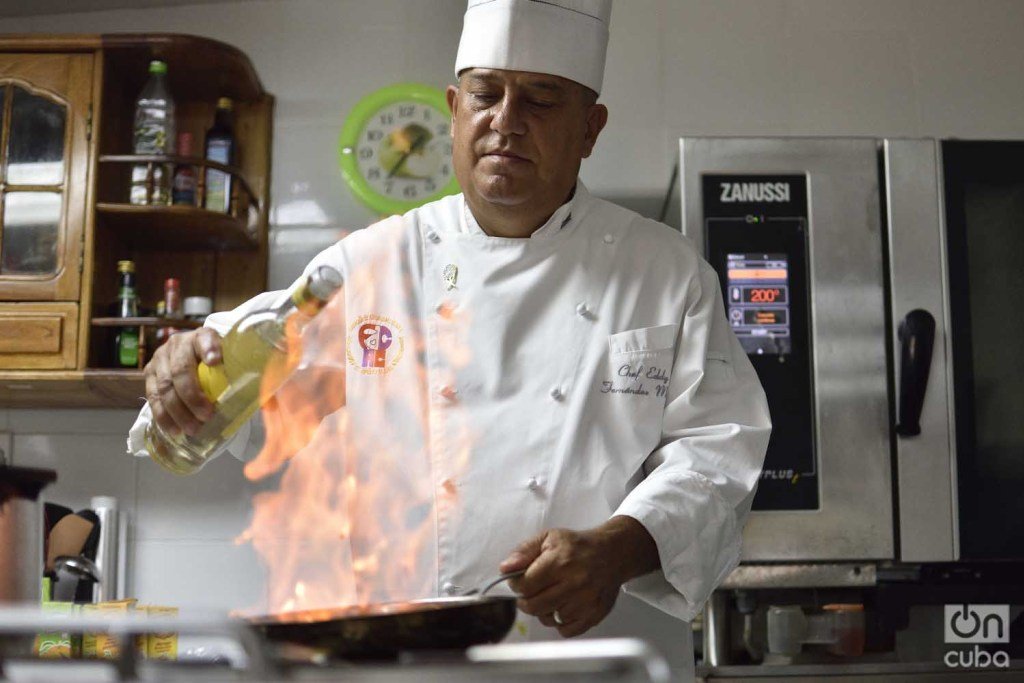
Is a good cook born or made in practice? In addition to creativity, what other qualities cannot be lacking?
The good cook is born and made. One can have interest or motivation, skills and innate talent for cooking, but one has to learn, practice, train. It’s like the doctor or the engineer, who has to be aware of what is happening in his specialty in the world to not be left behind, in terms of technology, nutrition, cost, even marketing.
On the other hand, in addition to being creative, people who work in this profession must have a vocation for service and a sense of responsibility. No one who works in the kitchen can do their job well only with schooling, they have to have the disposition; their heart, mind and hands have to be in what they do. And from my experience I can tell you that after you fall in love with cuisine you cannot let go. It becomes your life. There is no day when I don’t mention it, when I don’t think about it.
Next October the Federation will be celebrating a great festival in Havana. How does your organization get to this event and what goals does it pursue with it?
The Culinary Federation of Cuba was established in 1981 under the leadership of chef Gilberto Smith. Since then we have consolidated our work and we have grown steadily until we currently have about 65,000 members, 53% of whom are women. It doesn’t matter if the associate is a private or state worker, whether they work in a restaurant or a social institution. Where food is cooked, there’s where we are.
With that maturity as a strength, we will hold from October 14 to 18 the 7th International Culinary Festival at the Havana Convention Center, the largest gastronomy event that has been held in Cuba since the Federation exists.
We want it to be a great opportunity to share with other cuisine professionals and also for the training of our associates. So far participants from about 20 countries have confirmed their attendance and as part of it there will be theoretical panels, cooking shows, master classes, artistic presentations, an associate fair and days dedicated to Cuban cuisine and of other countries, among other activities.
The festival had not been held for 10 years and, although we are in a complex economic moment, we think it’s a good opportunity to show the potential of Cuban cuisine. We want to show that Cuba is not only sun and beach, that its gastronomy also has indisputable values that support its aspiration to be declared a national heritage and that can be an attraction for those who visit us. I think it’s possible that people throughout the world can identify us by our cuisine and that Cuba can become a gastronomic destination.

